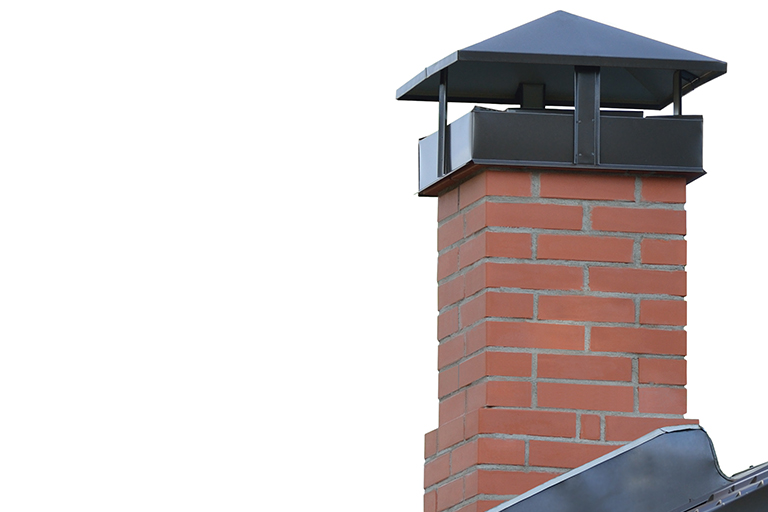By James Dulley
If you plan to use your fireplace for heating, it must be an efficient design. The typical open masonry fireplace loses much more heat than it provides. It may feel comfortable directly in front of the fireplace, but heated air is being drawn up the flue from the rest of the house.
There are some maintenance items you can do yourself, but cleaning the inside of the chimney is not one of them; have it professionally inspected and cleaned. Many house fires and deaths are caused from creosote buildup and poor chimney maintenance.
The exterior weathered spots do need to be fixed for both aesthetics and integrity of the chimney, but the condition of the inside of the chimney is more important. A well-maintained chimney should contain a chimney fire while avoiding a house fire.
Efficient fireplaces, which control combustion air and room air loss, tend to produce more creosote because of incomplete combustion. Even though you want it to be as efficient as possible, don’t choke down the combustion air inlet excessively.
Many houses have chimney fires without the family knowing it. One obvious sign of a chimney fire is a rapid increase of the draft up the chimney. The intense heat from the fire creates a very strong upward draft.
Another sign is reduced draft followed by smoky conditions. The heat from the chimney fire can crack the tiles lining it. If the mortar is deteriorated, the tiles can come loose or break and fall across the flue. This blocks the smoke path up the chimney causing back drafting and poor combustion.
When the chimney is cleaned, you may see chunks of puffy black creosote fall into the fireplace. This often indicates there was a chimney fire. Make sure the chimney sweep does a visual inspection of the entire chimney liner with a video camera.
If a chimney sweep does not do a thorough inspection yet suggests a new liner or a costly sealer procedure, get a second opinion. I had that happen once at my own home. The second inspection with a camera showed the chimney liner was actually fine.
Do-it-yourself repair materials are available for chimney exteriors. If water penetrates the chimney crown or through the sides, it can affect the interior mortar joints. It can also leak into the house walls causing structural damage.
Although it feels very hard, brick actually is a porous material so rainwater will easily migrate through it. This is the cause of the bad spots you see. In climates with repeated freeze/thaw cycles during winter, this damage happens faster.
Using a hammer and chisel, remove crumbling or loose mortar. Use matching elastomeric mortar repair material to fill the voids. After it sets up, coat the entire chimney exterior by brushing or spraying with chimney water repellent.
Inspect the chimney crown for cracks. Similar types of elastomeric repair materials can be brushed on cracks or applied with a trowel for more serious repairs. If it is below freezing temperatures, use a special type of material that sets up as it freezes.
Unless the metal flashing between the chimney and roof is badly rusted, a thick coating of flexible flashing sealant should block leaks. Badly rusted flashing must first be replaced and then sealed.

